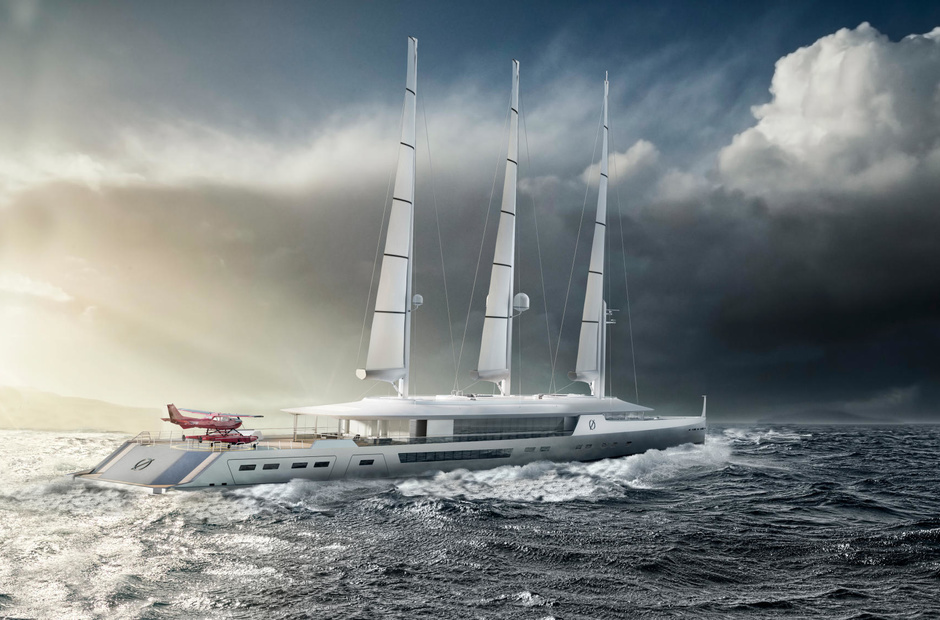Yachts International magazine has traced the history of the concept of an auxiliary sailing ship, or motorsailer, and suggested that this once unfinished idea has a great future.
In 1967, hydraulic engineer Wilhelm Pöls from Germany proposed to build a direct sailing dry cargo ship on six steel tripod masts. This economical vessel was to be the response of commercial shipping to the impending oil crisis, but it took decades before lightweight composite materials, optical sensors and improved hydraulics made this concept a reality.
It took almost 40 years for venture capitalist Tom Perkins to grasp the DynaRig concept for his radical sailing yacht Perini Navi, the 289-foot (88-meter) Maltese Falcon.
The German SkySails, for example, has successfully tried to attach kites to the bow of dry cargo ships by positioning them at high altitude. It is only in recent years, however, when private yacht owners have come under increasing pressure from the «green», that designers have begun to develop hybrid superyacht concepts that use wind to reduce fuel consumption.
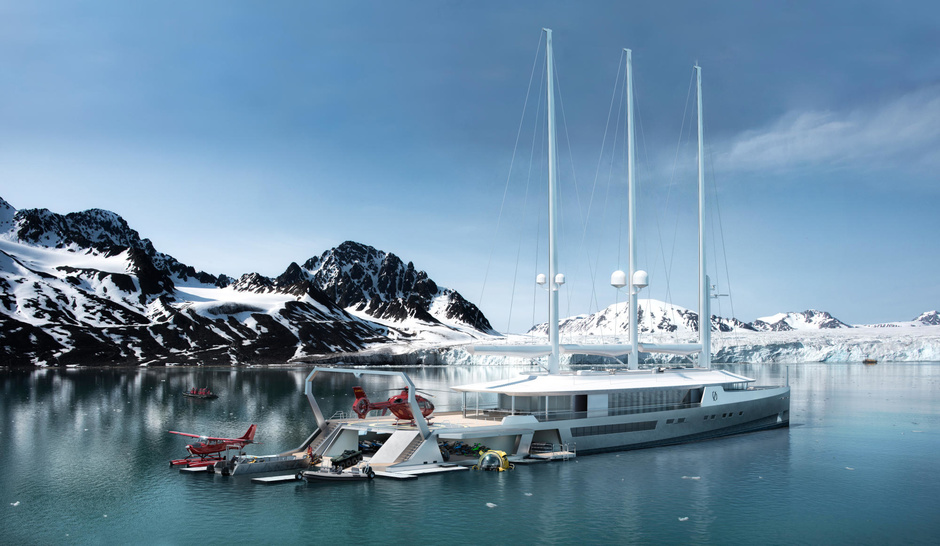
Oliver Stacey, a British designer who has honed his skills by working with industry veteran Martin Francis, has teamed up with naval architects BMT Nigel Gee to create the concept of a 262ft (80m) Explorer called Norse, in honour of the Vikings who inspired him.
«Despite its brutal appearance, Norse is a hybrid electric motor yacht that uses wind as a second power source," says Stacey. - Auxiliary sail technology is an easily accessible technology that can reduce fuel consumption by at least 20 percent»under favourable conditions.
The sails will be used during long passages to reduce fuel consumption and are expected to improve the ship's sailing performance.
«We wanted to focus on sustainability," says James Roy, Yacht Design Director at BMT Nigel Gee. - When we sat down and started thinking about how we could achieve this, we didn't reject the obvious decision to use the wind. But we wanted to create more than just a sailing yacht. In a way, what we did was a Hybrid with a capital letter».
The Norse is designed for cruising in different climates and will comply with the polar class, allowing it to be used at high latitudes. The yacht is expected to have low draft and will be equipped with a dynamic stabilization system for good maneuverability in confined spaces. In protected areas, the boat will be able to run with zero-emission engines off.
Determined to break with tradition, Stacey states that only the superstructure of Norse will be covered and painted, while the hull will remain untreated. An «A-shaped» crane built into the aft frame will serve to lift and launch the seaplane.
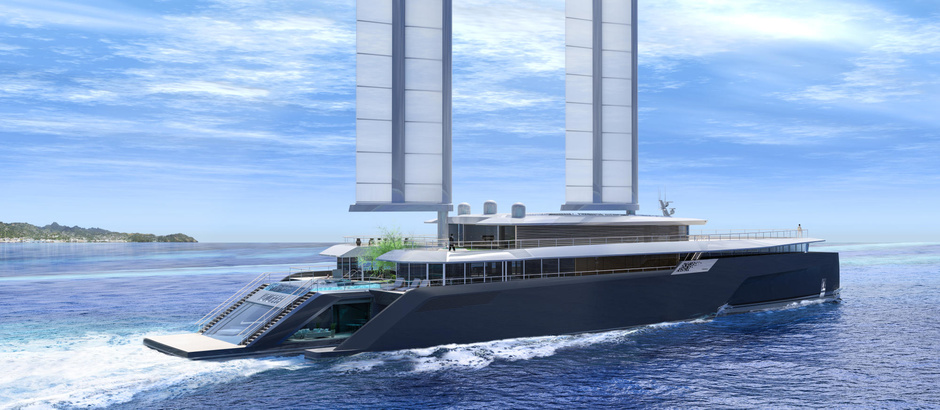

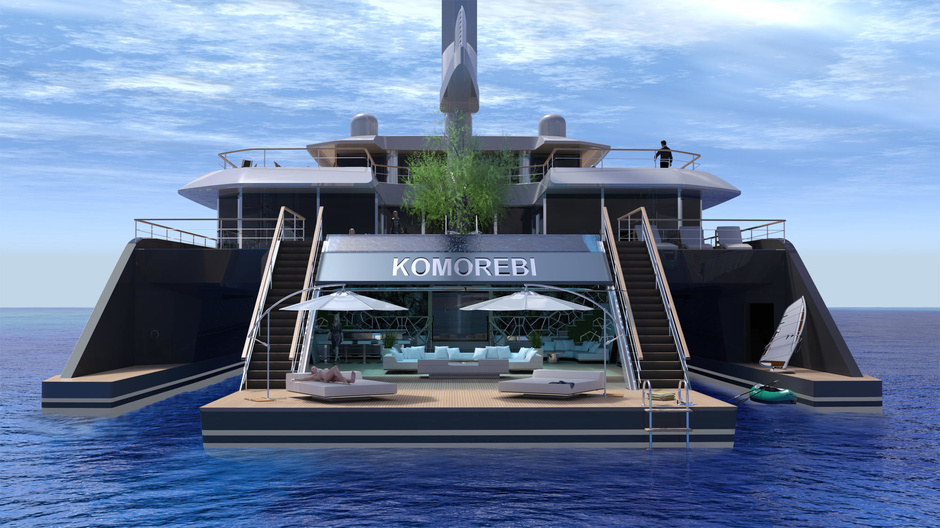
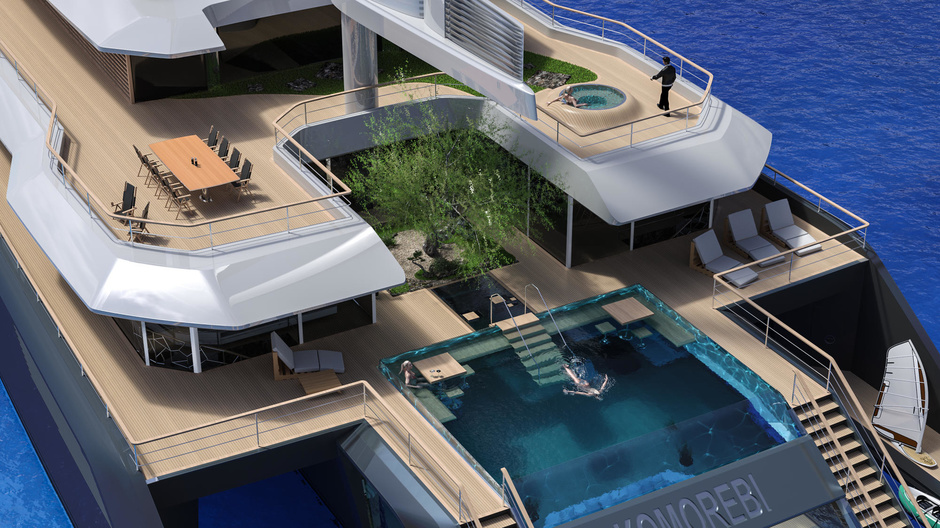
French VPLP Design has developed a similar concept. Launched in 2015, the 282-foot (86-meter) Komorebi Explorer, which is Japanese for «sunlight breaking through leaves», is a single hull with a hybrid electric propulsion system and automatic sails-wings that can give the boat a speed of 15 knots in 20 knots of wind, reducing fuel consumption by 30 percent.
«These are not pure sailing yachts or pure motor yachts," says Mark Van Petegegem, co-founder of VPLP. - You can only use engines or just sails on them, but most of the time you're likely to go on both. Since we're talking about an explorer, the challenge is not to increase speed, but to improve range and autonomy».
VPLP's interest in rigid sails-wings began in 2010 when the company collaborated with BMW Oracle Racing, winners of the 33rd America's Cup. Despite the excellent aerodynamic performance of the rigid wing sails, they cannot be rolled up and down like ordinary fabric sails. To get rid of this disadvantage, VPLP is working on a new soft sail-wing technology called Oceanwings. This technology can then be used in the design of motorhomesailers.
Performance is controlled by controlling the degree of curvature of the wing profile and twisting. According to VPLP, Oceanwings technology can reduce the sailing area required to move the ship by half compared to traditional sailing weapons. The design studio originally developed this concept for commercial shipbuilding applications, but later discovered that it would be well suited to the needs of superyacht owners seeking a more environmentally friendly solution. The VPLP team installed Oceanwings on a 23 foot (7 meter) prototype trimaran to fine-tune the models of the operations to be performed.
«Of course, a lot depends on how you want to use your yacht, but it's also a question of responsibility and image," says Van Pettigem, who has already requested a yard estimate for a 305ft (93m) project based on the Komorebi concept. - I think it's time to offer more environmentally friendly solutions for the power plant market. Many today's owners do not want or simply cannot afford to have a negative image around them and I think it is our duty as designers to start moving in the right direction».
You can bet that a ship with auxiliary sailing equipment is the same motorcycle salvage, and you won't be so wrong. Unfortunately, the term «motorsailer is» associated with ships that are too underloaded with sails and too heavy to develop the speed at which the least wave resistance is created in normal wind conditions without the help of a motor.
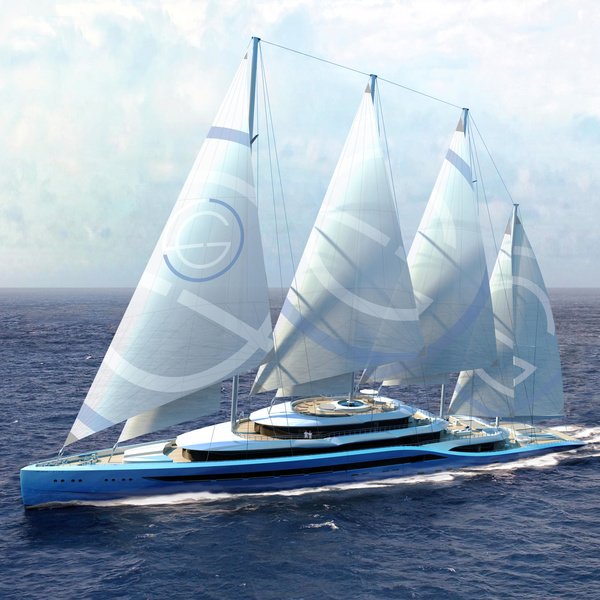
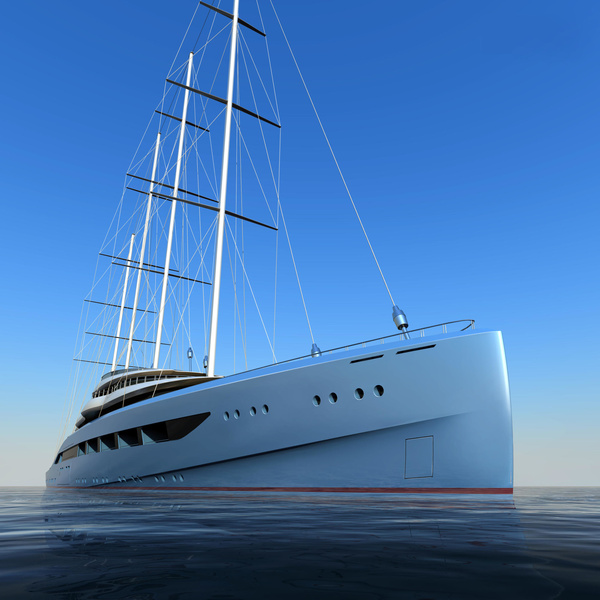
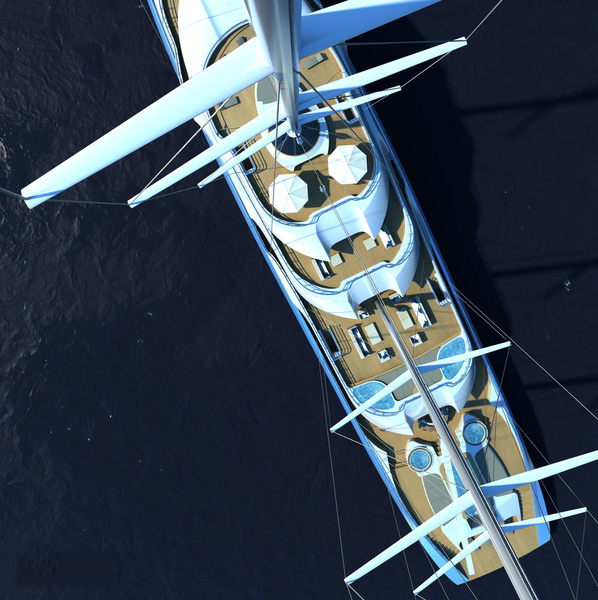
British studio Laurent Giles Naval Architects took note of this criticism in collaboration with H2 Yacht Design to create the 360 foot (110 m) four-mast Atlas concept.
Using a hybrid electric propulsion system with the ability to accumulate electricity, the ship can reach speeds of over 18 knots. When sailing in fresh wind and depending on the wind angle, Atlas is able to sail at comparable speeds.
The presence of a large number of sails means that each sail is relatively small in size. Combined with an automatic control system, a small crew will be required to maintain the sails. On some sails, power consumption will only be needed to maintain «hotel» functions, and the boat will run almost silently.
«With auxiliary sails or a motorsailer, this concept is clearly underdeveloped in the superyacht industry and the potential for wind force as a partial or full replacement for fuel is underestimated," says Wallis. - I think part of the problem is that motor yacht owners are biased about sails because they don't understand how they work, are afraid of additional crew requirements and don't like to open up. On the other hand, owners of sailing yachts want good speed and believe that motor yachts are incapable of doing anything with old junkies».
In fact, even racing cruisers have relatively little time to go cleanly under sail, especially during long passages with a reduced crew. Too little wind - and the yacht is heavy; too much wind - and they risk breaking the expensive rangout and sails.
Who knows? Perhaps it will soon be the motorsailer that will be the measure of steepness.

